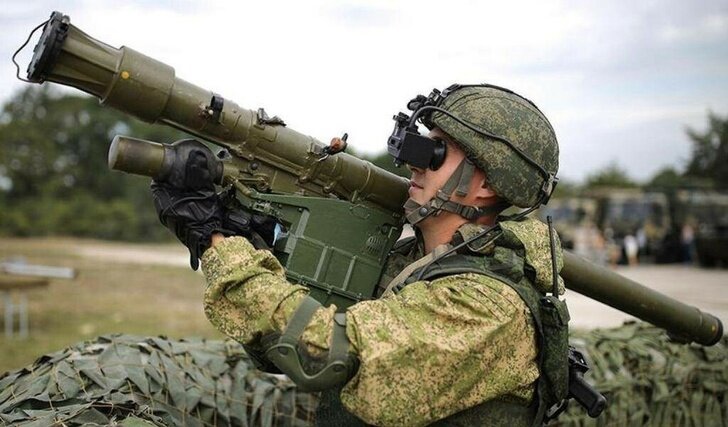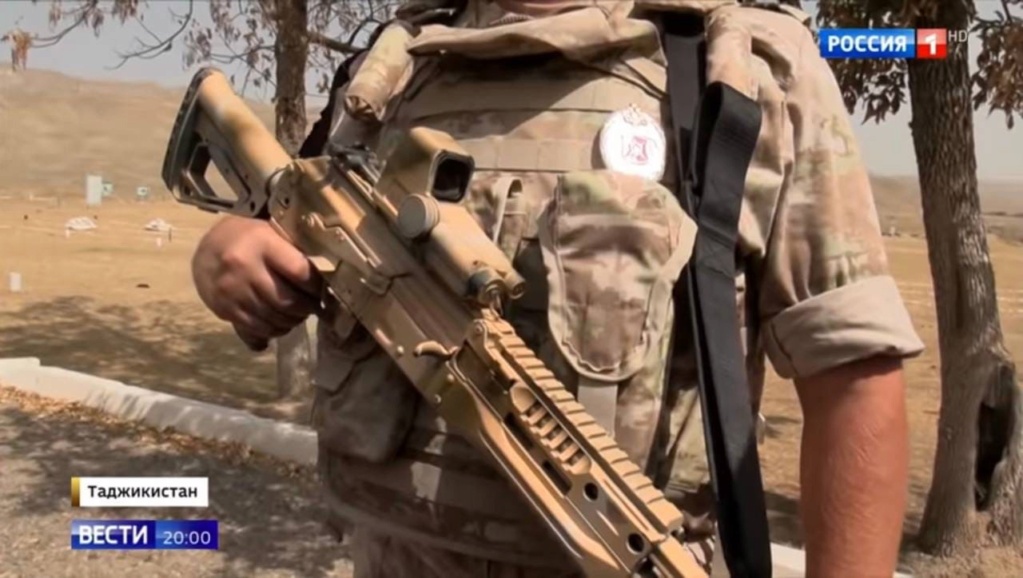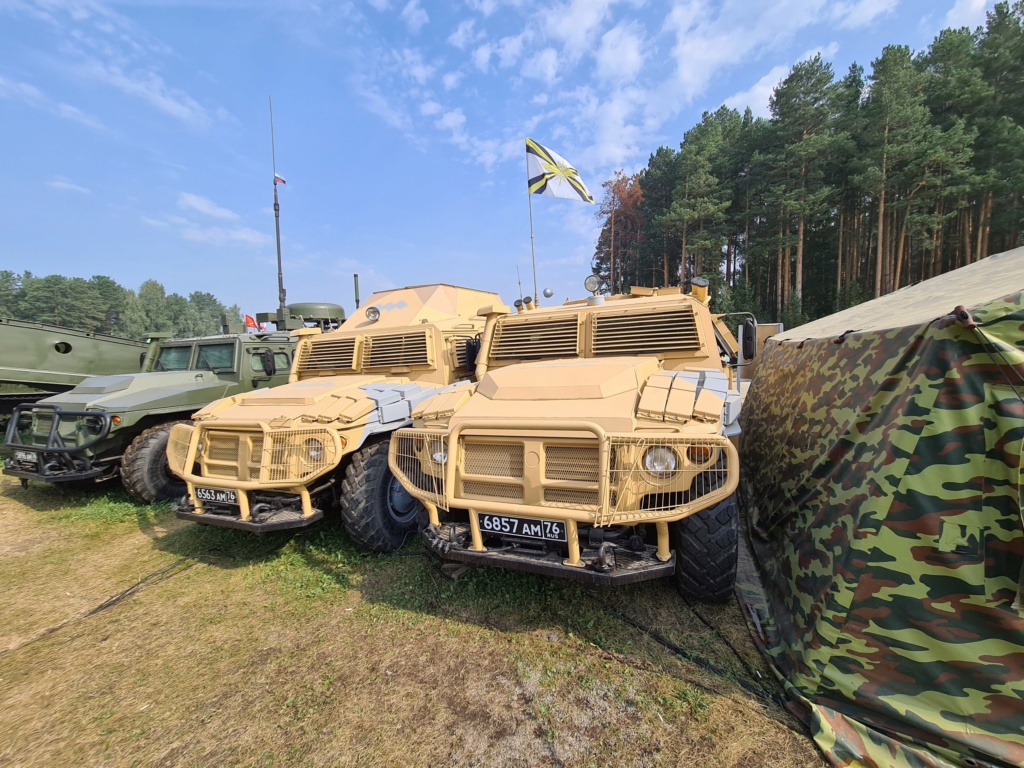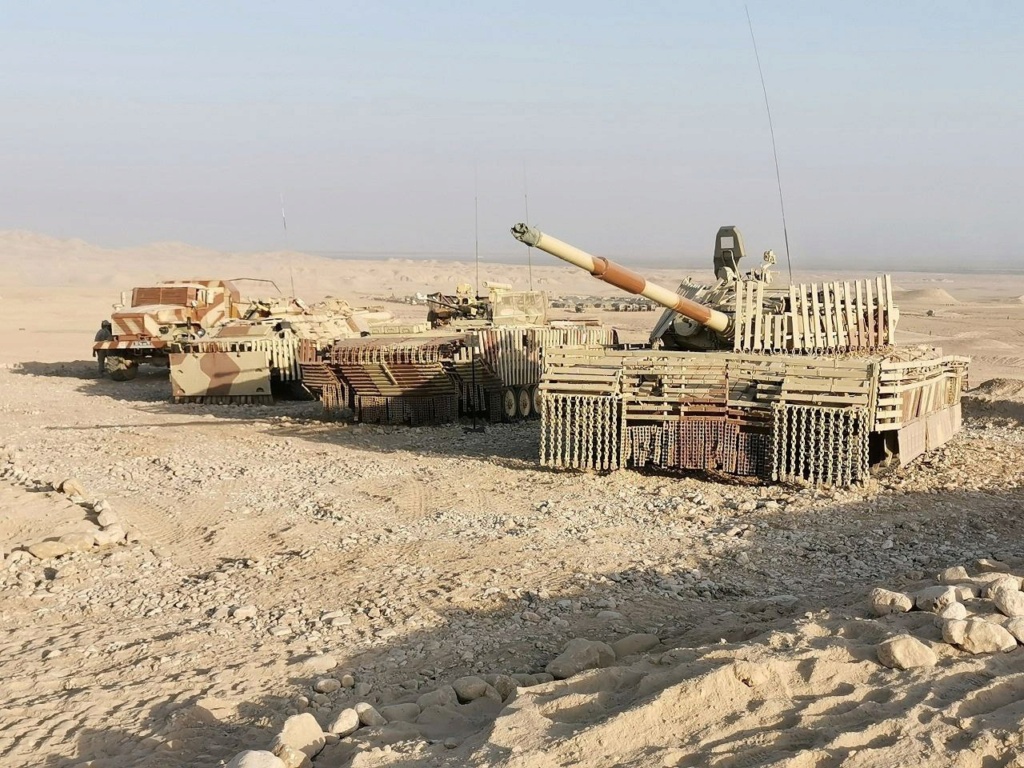Screen it up: Armor for 201st base combat vehicles What tasks in Tajikistan will the updated technology solve?
Russian combat vehicles of the 201st military base located in Tajikistan will receive additional protection kits. The armored personnel carriers BTR-82A and BMP-2M will be covered with lattice screens and armor plates . This will make them less vulnerable to enemy fire. Experts note that the transport of Russian motorized riflemen in the critical region will be protected not only from machine guns, but even from anti-tank missiles.
Sources in the military department told Izvestia that a fundamental decision was made to increase the combat capabilities of the armored vehicles of the 201st Russian military base in Tajikistan.In particular, the issue of equipping armored personnel carriers and infantry fighting vehicles with additional protective elements is being considered.
The kit consists of two types of protection. The first one is the armor plates, which cover the critical places of the vehicle. The second component is lattice screens, which are mounted along the perimeter of the case. . The mass of such a body kit is about a ton. The equipment is attached to the vehicle by the crew, which takes approximately one hour.
Armor plates should protect the crew of the combat vehicle and the landing force from shrapnel and bullets of 7.62 mm and 12.6 mm caliber at distances from 400 m . This is especially critical for armored personnel carriers: their protection was initially so weak that the side of the car in some was pierced by shots from a 7.62 mm machine gun.
BMP-2M infantry fighting vehicle during a dynamic demonstration within the framework of the International Army Games-2021 at the Alabino training ground.
The lattice body kit is designed to protect the vehicle from rocket-propelled grenades and anti-tank missiles. It is not one hundred percent - the probability of triggering is about 50 to 50 and depends on the location of the hit. If the warhead crashes between the grating bars, the ammunition will get stuck and will not work. There is also an option that when a grenade collides with a grate, the cumulative jet will be deformed, and its effect will be less destructive.
Drone out of the blue: learning to repel drone raids near Afghan border
Trainings are held in Uzbekistan, Tajikistan and Kyrgyzstan
The armored vehicles in service with the Russian army were developed mainly during the Cold War based on the means of destruction that could be used in a global conflict, military expert Alexei Khlopotov told Izvestia. However, in conditions of local hostilities, light weapons come first.
“ In Tajikistan, there remains the threat of the penetration of various gangs, which are armed with mainly light anti-tank weapons: grenade launchers, possibly anti-tank missile systems,” explained Aleksey Khlopotov. - Against these funds, it is necessary to strengthen the protection of our equipment. For a long time, special kits in the form of lattice screens have been developed that work very effectively against RPGs. The point is that, falling into the lattice plates, made not of simple metal, but of solid armored steel, the head of the anti-tank grenade is destroyed - the cumulative funnel itself, which greatly reduces the effectiveness of detonation.As a rule, such screens save the tank, as well as infantry fighting vehicles and armored personnel carriers. If the vehicles in Tajikistan are equipped with such protective systems, their survivability and the safety of the crew will significantly increase. These measures are necessary because the threat is real and it will only grow over time.
Basic versions of armored personnel carriers and infantry fighting vehicles are well protected in frontal projection in accordance with the technical specifications of the Ministry of Defense, military expert Viktor Murakhovsky told Izvestia.
- From this side, protection is provided against almost all small arms of any caliber, including including large-caliber machine guns, - he explained. “But their side projections are more vulnerable to damage from large calibers. The equipment of this generation, of course, must be equipped with additional protection kits, regardless of where it is deployed.
Unveiled threat: Russia to conduct a series of exercises on the Afghan border.
What challenges will the armed forces of the Russian Federation, Tajikistan, Kyrgyzstan and Uzbekistan face?
In recent months, against the backdrop of the rapidly changing situation in Afghanistan, a series of major joint military exercises have been held in the Central Asian region. The maneuvers take place on the territory of Uzbekistan, Kyrgyzstan and Tajikistan. The culmination of joint training of troops should be the anti-terrorist exercise of the SCO countries "Peace Mission - 2021". It will take place at the Donguz training ground in the Orenburg region from 11 to 25 September.
In parts of the 201st Russian military base, combat training is ongoing. On September 9, the press service of the Central Military District announced the completion of the maneuvers, during which they practiced repelling the attack of the militants. According to the scenario, a group of a mock enemy in cars tried to break into the territory of a military unit through a checkpoint. An anti-terror group on armored personnel carriers BTR-82A quickly arrived at the scene of the clash, blocked and defeated the "militants".
Rearmament on the ground
Until the mid-2010s, the Russian military base (RVB) in Tajikistan was content with equipment left over from the Soviet 201st motorized rifle division. For a long time, its material part has hardly been updated. Then the situation began to change rapidly.
Since 2015, motorized rifle units have been re-equipped with new BTR-82A armored personnel carriers with increased firepower. Since 2018, the upgraded BMP-2M has also been delivered here. They differ from the basic model in improved sight and observation devices, as well as a modern radio station R-168 "Aqueduct".
The artillery grouping of the base was reinforced with long-range MLRS "Uragan" of 220 mm caliber. Since it must be ready for action in mountainous terrain, it also includes lightweight equipment - 122 mm self-propelled artillery mounts "Gvozdika", as well as anti-aircraft guns ZU-23, mounted on the basis of armored trucks "Ural".
The air defense of the base was reinforced with the S-300PS anti-aircraft missile system. To combat small drones and other air targets, the delivery of the most modern portable systems "Verba" has begun at the RVB.
Receives 201st base and new infantry weapons. Its units are re-equipping the most modern version of the Kalashnikov AK-12 assault rifle, powerful 12.7 mm ASVK-M sniper rifles, Yarygin pistols and advanced rocket-propelled flamethrowers.
In 2015, a Russian air group was recreated in Tajikistan. A mixed helicopter squadron was formed at the Gissar airfield located not far from Dushanbe. It includes shock Mi-24P and military transport Mi-8MTV5-1.
The base in Tajikistan is one of the few formations that have their own drone battalion. Small "Orlan-10", as well as light "Eleron-3" and "Tachyon" are used to monitor border areas and adjust artillery fire.
https://iz-ru.translate.goog/1219540/anton-lavrov-roman-kretcul-anna-cherepanova/ekranizirui-eto-boevym-mashinam-201-i-bazy-usiliat-broniu?_x_tr_sl=ru&_x_tr_tl=en&_x_tr_hl=en&_x_tr_pto=ajax,elem













